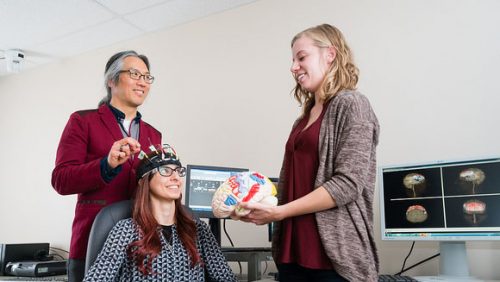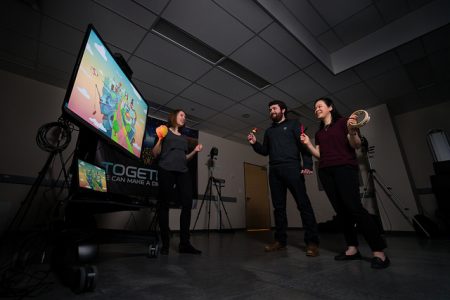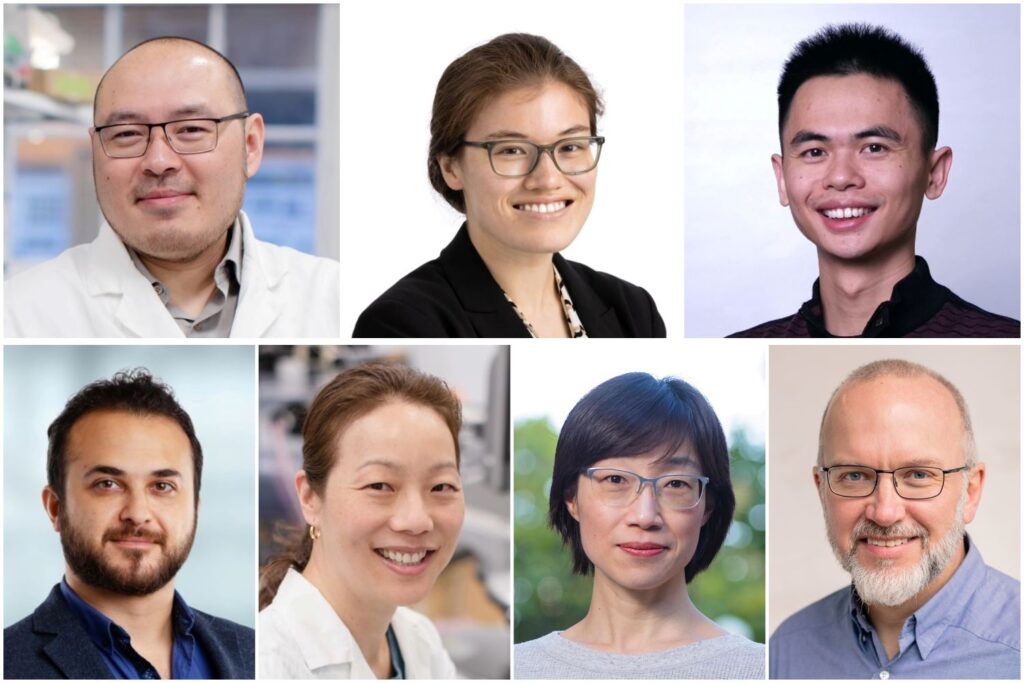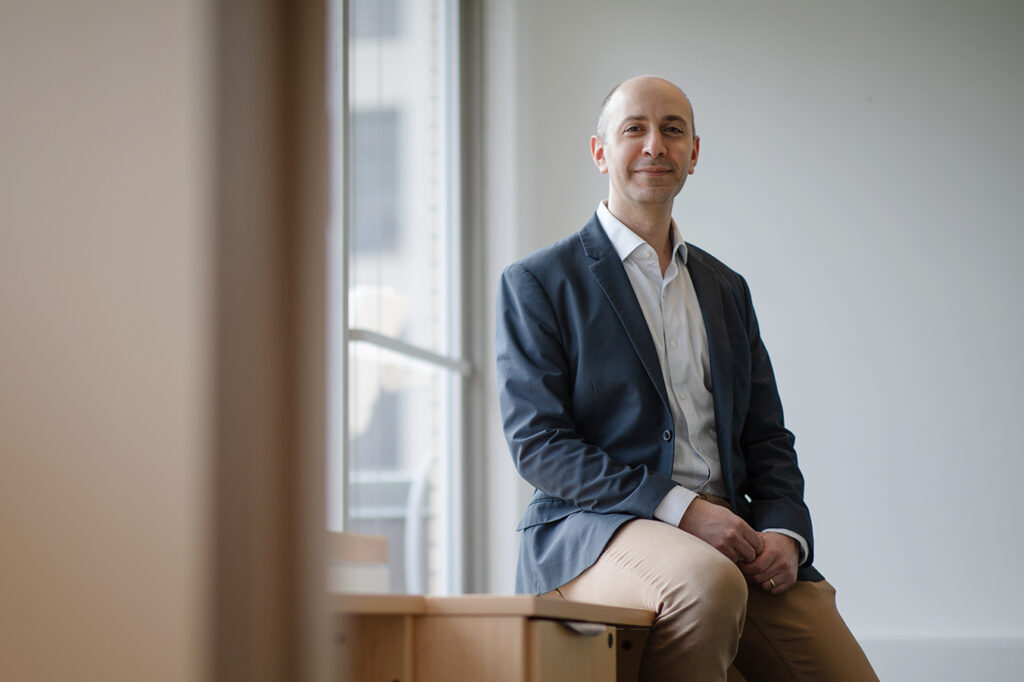Clinical Engineering
BME’s clinical engineers design technologies, devices and strategies for people with chronic disease, traumatic injury, disabilities and mobility limitations to help them integrate more fully with their environment.
Check out the case studies below to learn about the exciting research done here at BME:
Neural Rehabilitation

Accessing the right to communication for children and youth with complex disabilities
Professor Tom Chau helps young people with complex disabilities connect with the world around them.
As a senior scientist and vice-president of research at Holland Bloorview Kids Rehabilitation Hospital, Chau leads the Paediatric Rehabilitation Intelligent Systems Multidisciplinary (PRISM) Lab to develop sensing, signal processing and machine-learning methods that enable children and youth with various disabilities to communicate and interact with their environment.
One of his recent foci is to use a non-invasive technique known as near-infrared spectroscopy — to decode brain patterns in young people with severe neurological disability. The signals can then be articulated through various access technologies to enable communication between the patient and their caregivers.
Prosthetics

Enabling mobility for those with physical disabilities
A typical artificial limb costs several thousands of dollars. Professor Jan Andrysek’s All-Terrain Knee (AT-Knee), developed at Holland Bloorview Kids Rehabilitation Hospital, is high-functioning, durable, and costs a fraction of that price.
As a clinical engineer and scientist at Holland Bloorview Kids Rehabilitation Hospital, Andrysek leads the Paediatrics, Rehabilitation, Orthotics, Prosthetics, Engineering and Locomotion (PROPEL) Lab. Its study of human biomechanics allows them to develop and innovate affordable treatments and assistive technologies that enable mobility for individuals with severe physical disabilities.
Today, his spinoff company, LegWorks, is producing the AT-Knee to help amputees around the world regain their mobility and independence.
Interactive Technology

Video games: a new therapeutic frontier
As a clinical engineer and scientist at Holland Bloorview Kids Rehabilitation Hospital, Professor Elaine Biddiss leads the Possibility Engineering and Research Lab (PEARL) to develop interactive technologies that assist young people with disabilities to accomplish rehabilitation goals.
One area of PEARL’s research focus is virtual reality therapy — an interactive, low-cost series of video games that impose virtual constraints to encourage therapeutic movements and can be customized to an individual’s rehabilitation needs. This particular innovation, along with several other developments from her lab, engages children with disabilities and mobility challenges to complete repetitive therapy tasks and foster social interactions through multiplayer options.
Read more news about clinical engineering
Functional Electrical Stimulation sleeve to improve rehabilitation for motor control impairments
A recent study published in BioMedical Engineering OnLine introduces a novel smart sleeve designed for Functional Electrical Stimulation (FES) applications. This new technology integrates advanced carbon-based dry electrodes within a textile structure, offering significant improvements in comfort and usability for patients with motor control impairments.
Seven BME members receive Joint Seed Program funding for interdivisional research
Initiated in 2015, the Joint Seed Program is an interdivisional research funding program designed to promote multi-disciplinary research and catalyze new innovative partnerships between researchers from the Faculty of Applied Science and Engineering and those from outside of Engineering. The recipients for this year will undertake unique and innovative research initiatives ranging from developing bioinoculant strategies to equitable healthcare and advanced imaging techniques.
Dr. José Zariffa appointed KITE Chair in spinal cord injury research at UHN
Dr. José Zariffa will be the holder of the KITE Chair in Spinal Cord Injury Research at UHN, a joint Hospital-University Named Chair between the University Health Network and the University of Toronto (UofT), for a five-year term, effective April 1, 2024. The KITE Chair in Spinal Cord Injury Research was initially established in December 2007 thanks to the kind and thoughtful generosity of a variety of donors to Toronto Rehabilitation Institute.
Enhancing Neurostimulation
Researchers at UHN’s KITE Research Institute have recently leveraged the power of deep learning to improve nerve signalling interpretation, paving the way for more effective neuroprosthetic devices and offering new hope for those with impaired motor function.
Computational model unveils dynamics of Deep Brain Stimulation
Deep Brain Stimulation (DBS) has been a longstanding adjunctive therapy for movement disorders like Parkinson’s disease, yet its precise mechanisms of action have remained elusive. In a recent study published in the journal Neuromodulation, Dr. Milad Lankarany and his team have introduced a computational model that accurately predicts the dynamics of neuronal activity during DBS across various frequencies.





